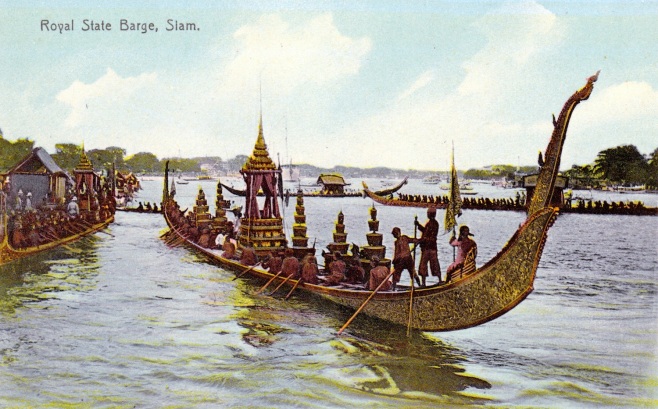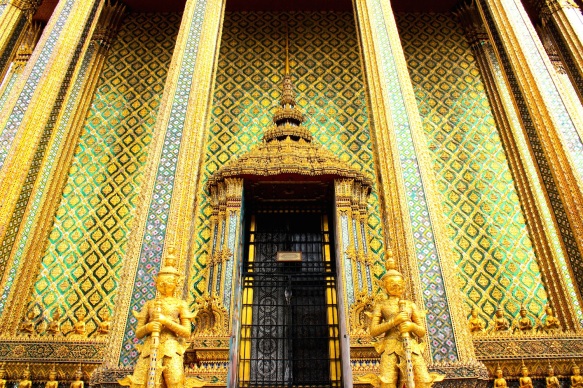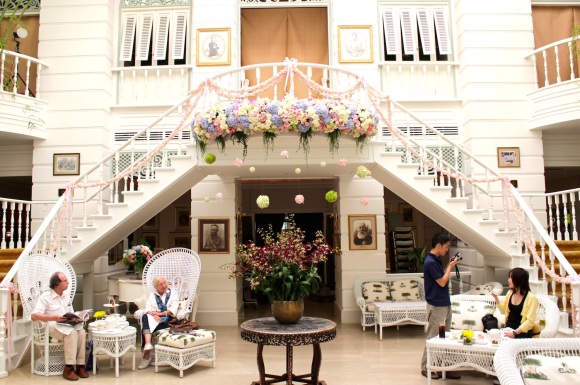
The Royal Barge on the Chao Phraya River
Bangkok, the royal capital of the Kingdom of Siam (today’s Thailand), is important in the history of South East Asia because it never succumbed to any European colonial power. In other words, there is no colonial history of the city — even though it came very close to having one.
Just over a century ago, in 1893, French warships sailed up the Maenam Chao Phraya or the River of Kings intent on forcibly taking this ancient empire as the French equivalent of British India. It took some deft foreign policy and significant territorial concessions on the part of the then Siamese monarch, King Chulalongkorn, also known as Rama V, of the still ruling Chakri Dynasty, for Bangkok to avoid becoming the capital of French Indochina.

French Warships on the Maenam Chao Phraya, from an 1893 newspaper.
The king, himself, we know well. Most latter-day grand tourists remember him from when he was a little boy getting to know his very persistent governess, Anna Leonowens, in the 1954 Hollywood movie musical, The King and I. Educated in the western tradition, he proved to be a vanguard, modernising his kingdom and playing British insecurities against French egocentrism so shrewdly that he managed to secure from both Great Powers a promise to ensure the independence and neutrality of his Kingdom.
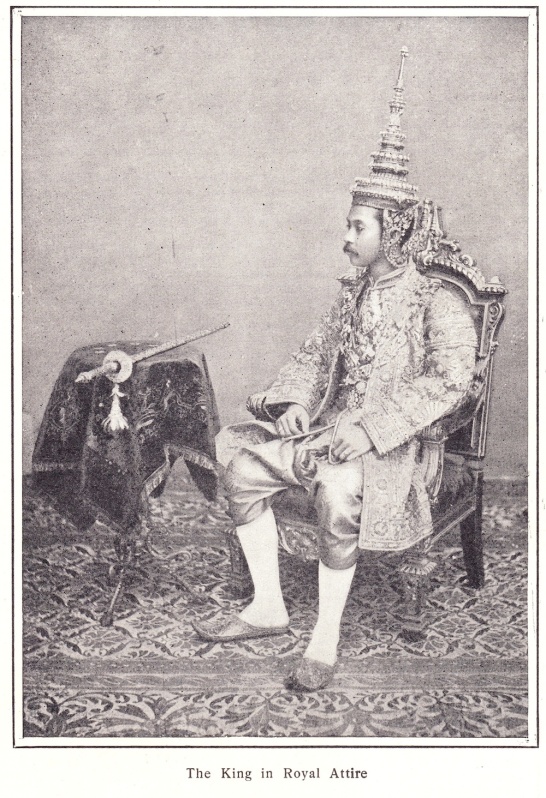
Photograph of King Chulalongkorn from an early 1900s American newspaper.
Having no colonial history, however, doesn’t mean Siam has no relation whatsoever to colonialism in South East Asia. Make no mistake about it: while Thailand was never a colony, Siam was a colonising power, exerting its influence over Laos and Cambodia (which it conceded to French Indochina), and the primarily Malay Muslim region along the Kra Isthmus, of which the provinces of Kelantan, Trengganu, Perlis and Perak were conceded to British Malaya. A trip to Laos and Cambodia will reveal just how pervasive the Thai cultural influence still is in these countries.
At the same time, Siam, being independent of any colonial empire, paid host to Europeans from almost every creed and language. The Portuguese and Dutch were the first to arrive in the 1500s and stayed for more than 400 years. Then there were the French in the 1600s, the Danish in the 1700s, the British in the 1800s, and finally the Americans, with their investment dollars, after World War II. At that time, the mighty Chao Phraya River was the stage for a grand pageant of empire and diplomacy at the turn of the century.
[The Romance of the Grand Tour – 100 Years of Travel in Southeast Asia is available now at all major bookstores in Singapore, Southeast Asia and Hong Kong. As of mid-June, it will also be available at Waterstones and Blackwells in London, on http://www.amazon.co.uk and http://www.bookdepository.com]
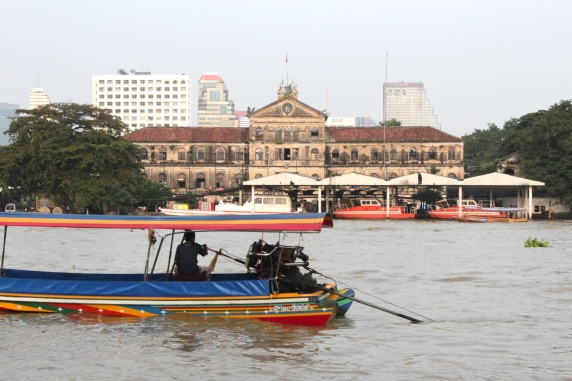
The Chao Phraya River today with the former Customs House in the background.
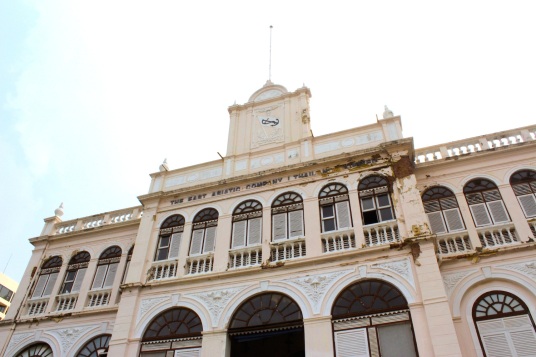
The former headquarters of the Danish East Asiatic Company.

